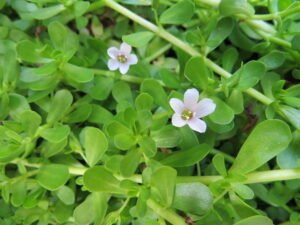How To Grow And Care For Peony Flowers

Peony Flowers
Peony flowers are a true delight to behold. With their lush petals and vibrant colors, they add a touch of elegance and beauty to any garden or floral arrangement. Also known as peony or paeony, it is a herbaceous perennial flowering plant in the genus Paeonia. Native to Europe, Asia, and Western North America, these beautiful flowering plants are now being grown in gardens across the world. This article explains in detail how to grow and care for peony flowers.

In many cultures, peony flowers are seen as a symbol of prosperity, good fortune, and love. In Chinese culture, they are known as the “king of flowers” and are often associated with wealth and honor. In Western cultures, peonies are often given as a romantic gesture, symbolizing love, affection, and a happy marriage.
Facts About Peony Flowers
The name “peony” is derived from the Latin word “Paeon.” In Greek mythology, Paeon was a student of Asclepius, the god of medicine. According to legend, Paeon used a peony root to heal Pluto, the god of the underworld, and was rewarded with the flower being named after him.
Peony flowers come in a wide range of colors, including shades of pink, red, white, and yellow. There are three main types of peonies: herbaceous peonies, tree peonies, and intersectional peonies. Each variety has its own unique characteristics and beauty, making peonies a versatile choice for gardens and floral arrangements.
Peony flowers are known for their longevity, with some varieties living for up to 100 years. These flowers are also resilient and can withstand harsh weather conditions, making them a popular choice for gardeners. With proper care and maintenance, peonies can bloom year after year, bringing joy and beauty to any landscape.
FAQ About Peony Flowers
1. When do peony flowers bloom?
Peony flowers typically bloom in late spring or early summer, depending on the variety and location. The exact blooming time can vary, but it is generally between May and June. It is worth noting that peony flowers have a relatively short blooming period, usually lasting only a few weeks.
2. When to Plant Peony Bulbs?
The ideal time to plant peony bulbs is in the fall, between September and October. In doing so, the bulbs are able to establish their root systems before to the arrival of winter frost. Planting in the fall also gives the bulbs a head start, so they are ready to bloom in the following spring.
However, if you missed the fall planting window, you can still plant peony bulbs in the spring. Just make sure to do it as early as possible, before the ground becomes too warm.
3. What does peony smell like?
The fragrance of a peony can vary slightly depending on the variety, but most peonies have a pleasant and intoxicating aroma. Some people compare the scent of peonies to roses or even jasmine, while others say it has a unique and distinct fragrance of its own.
One of the reasons why peonies are so beloved is because of their fragrance. The scent is not overpowering or cloying, but rather it is delicate and inviting. It can fill a room with its sweet aroma and create a sense of tranquility and beauty.
Choosing the Right Variety
Before you start growing peony flowers, it’s important to choose the right variety for your garden. There are three main types of peonies: herbaceous peonies, tree peonies, and intersectional peonies. Each type has its own unique characteristics and growing requirements.
Herbaceous peonies are the most common type and are known for their large, showy flowers. In winter, they die down to the ground, and in spring, they grow back. This makes them a great option for gardeners who prefer a low-maintenance plant. Herbaceous peonies also come in a wide variety of colors, including white, pink, red, and yellow, allowing you to choose the perfect shade for your garden.
Tree peonies, on the other hand, have woody stems that remain above ground all year round. They produce large, colorful flowers and can grow into small shrubs. Tree peonies are often considered more exotic and luxurious due to their unique appearance and longer lifespan. They require slightly different care compared to herbaceous peonies, but their stunning blooms make them a worthwhile addition to any garden.
The greatest qualities of both herbaceous and tree peonies are combined to create intersectional peonies. They have the sturdy stems and large, showy flowers of tree peonies, while also being more adaptable and easier to care for like herbaceous peonies. Intersectional peonies are known for their unique flower forms and vibrant colors, making them a popular choice among peony enthusiasts.
When choosing a variety, consider factors such as flower color, bloom time, and plant size. Peonies are available in a variety of hues, such as white, pink, red, and yellow. While some types flower later in the season, others bloom early. This allows you to create a stunning display of peony flowers that will last throughout the spring and summer months. Pay attention to the plant’s height and spread to ensure it will fit well in your garden and complement the other plants in your landscape design.
Ultimately, the right peony variety for your garden will depend on your personal preferences and the specific conditions of your garden. Take the time to research different varieties, visit local nurseries or gardens to see them in person, and consider consulting with experienced gardeners or horticulturists for their recommendations. With the right variety, you can enjoy the beauty and elegance of peony flowers in your garden for years to come.
Planting Peony Flowers
Peonies are best planted in the fall, ideally in September or October. This enables the plants to develop their root systems prior to the arrival of winter. Follow these steps to plant your peony flowers:
- Choose a sunny location: Peonies thrive in full sun, so choose a spot in your garden that receives at least six hours of direct sunlight each day.
- Prepare the soil: Peonies like loose, organic soil that drains easily. To improve the soil’s fertility and drainage, amend it with compost or well-rotted manure before planting.
- Dig a hole: Dig a hole that is wide and deep enough to accommodate the peony’s root system. One foot deep and two feet broad is how big the hole should be.
- Place the peony in the hole: Gently place the peony in the hole, making sure the eyes (buds) are facing upwards. The eyes must to be no deeper than two inches in the soil.
- Backfill the hole: Fill the hole with soil, firming it gently around the roots. Make sure the soil is level with the surrounding ground.
- Water thoroughly: After planting, water the peony thoroughly to settle the soil and remove any air pockets. Keep the soil consistently moist but not waterlogged.
- Mulch the area: Once the peony is planted, apply a layer of organic mulch around the base of the plant. This helps to conserve moisture, suppress weeds, and regulate soil temperature.
- Provide support: Peonies have large, heavy blooms that may require support. Install a peony ring or stakes around the plant to prevent the stems from bending or breaking under the weight of the flowers.
- Prune back foliage: In the fall, after the first frost, cut back the foliage of the peony to about 2 inches above the ground. This helps to prevent disease and promotes healthy growth in the following spring.
- Monitor for pests and diseases: Keep an eye out for common pests such as aphids and diseases such as botrytis blight. If necessary, treat the plants with organic insecticides or fungicides to protect them.
- Enjoy the blooms: With proper care and maintenance, your peony flowers will reward you with stunning blooms year after year. Take the time to appreciate their beauty and fragrance, and consider cutting some blooms to bring indoors and enjoy.
How To Care For Peony Flowers
Once your peony flowers are planted, it’s important to provide them with the proper care to ensure their health and longevity. Here are some tips for caring for your peony flowers:
Watering
Peonies require regular watering, especially during dry periods. Water deeply once a week, providing enough water to penetrate the root zone. Avoid overwatering, as peonies are susceptible to root rot in waterlogged soil.
Fertilizing
If you prefer organic gardening methods, there are several options for fertilizing your peony flowers. One popular choice is compost, which provides a slow release of nutrients and improves soil structure. You can also use well-rotted manure, which is rich in organic matter and beneficial microorganisms.
Another organic fertilizer option is bone meal, which is high in phosphorus. Phosphorus is essential for flower production and can help your peonies produce larger and more abundant blooms.
If you prefer inorganic fertilizers, there are also options available. Look for a balanced fertilizer with an NPK ratio of 10-10-10 or 5-10-10. This means the fertilizer contains equal or higher amounts of nitrogen, phosphorus, and potassium, respectively.
When applying inorganic fertilizers, it’s important to follow the package instructions carefully to avoid over-fertilization, which can harm your peony plants. Applying fertilizer in early spring and again after the flowers have bloomed can help promote healthy growth and abundant blooms.
Supporting
As peony flowers grow, their heavy blooms can cause the stems to bend or break. To prevent this, provide support for your peony plants. Place a peony ring or stakes around the plants in early spring, before they start to grow. This will help keep the stems upright and prevent them from flopping over.
Deadheading
Deadheading, or removing spent flowers, can help prolong the blooming period of your peony flowers. Once a bloom has faded, use clean scissors or pruners to cut it off just above a set of healthy leaves. By doing this, the plant’s energy will be focused on creating new blossoms.
Pruning
Peony flowers require minimal pruning. Get rid of any damaged or dead leaves in the late fall or early spring. Cut the stems back to the ground in late fall, after the first frost, or in early spring, before new growth begins.
Protecting
Peonies are generally low-maintenance plants, but they can be susceptible to certain pests and diseases. Watch out for common problems like worms, powdery mildew, and botrytis blight. If necessary, treat these problems with organic or chemical controls.
In addition to these general care tips, there are a few other considerations to keep in mind when caring for your peony flowers. First and foremost, planting in the proper spot is crucial. Peonies prefer full sun or light shade and well-draining soil. They also benefit from good air circulation, so avoid planting them too close to other plants or structures.
Another important aspect of caring for peony flowers is mulching. The application of an organic mulch layer at the base of plants can aid in soil temperature regulation, weed suppression, and moisture conservation. Use a layer of mulch about 2-3 inches thick, taking care not to mound it up against the stems.
Lastly, it’s worth noting that peonies are long-lived perennials that can thrive for many years with proper care. However, they can be slow to establish and may not bloom in their first year or two. Be patient and give your peony flowers time to settle in and develop a strong root system before expecting abundant blooms.
How To Propagate Peony Flowers
If you want to expand your peony flower collection, you can propagate peonies through division or by growing them from seeds.
Division is the most common method of propagation and is best done in early fall. Dig up the entire plant and carefully separate the roots into smaller sections, making sure each section has at least three to five eyes. Replant the divisions at the same depth as the original plant, spacing them about 3 feet apart.
Growing peonies from seeds is a more time-consuming process. Collect seeds from mature peony plants in the fall and sow them in containers filled with a well-draining seed-starting mix. Place the containers in a cool, dark location and keep the soil consistently moist. The seeds will germinate in spring, and the young seedlings can be transplanted to the garden after they have developed a strong root system.
While division and growing from seeds are the two primary methods of peony propagation, there are other techniques that can be used as well. One such method is called root cuttings. This involves taking small sections of the peony root and planting them in a separate container or directly in the ground. With proper care and attention, these root cuttings can develop into new peony plants.
Another method is called grafting, which involves joining a piece of one peony plant (the scion) onto the rootstock of another peony plant. This technique is commonly used by professional growers to create new varieties or to propagate peonies that are difficult to grow from seeds or division.
Regardless of the propagation method you choose, it’s important to ensure that the new plants receive proper care and maintenance. Peonies prefer well-draining soil, ample sunlight, and regular watering. They also benefit from the application of organic fertilizer and occasional pruning to promote healthy growth and abundant blooms.





